Sofia architecture and memorials built during the period when the communists were in charge of Bulgaria
I got completely lambasted by the guy in the Tourist Information Centre in Sofia when I suggested we were looking for Communist-era architecture in Sofia. Within the very early stages of our (eventually) long conversation, he was telling me that Sofia would be a much more attractive city if it hadn’t been bombed by the British during World War II (true) (*), informing me that communism originated in England (sort of true, Karl Marx and all that…) and accusing me of insulting the Bulgarian people (not true or at least not intentional on my part).
(*) I held back (just) from pointing out that Bulgaria should have picked the right side to back in the first place!
I was a little miffed, to say the least, I’d only gone in to get a map and to inquire about the location of a couple of monuments in the city that Kirsty and I wanted to visit.
So, what did I do to make this guy go off on one in the way he did? To begin with, I honestly had no idea but it soon became apparent to both Kirsty and me that I made one crucial mistake when asking for help in identifying the places on my list. I said to him that I was interested in seeing ‘communist-era monuments’ in Sofia and it was this statement at which he took umbrage, plus it was the reason why he accused me of offending the Bulgarian people.
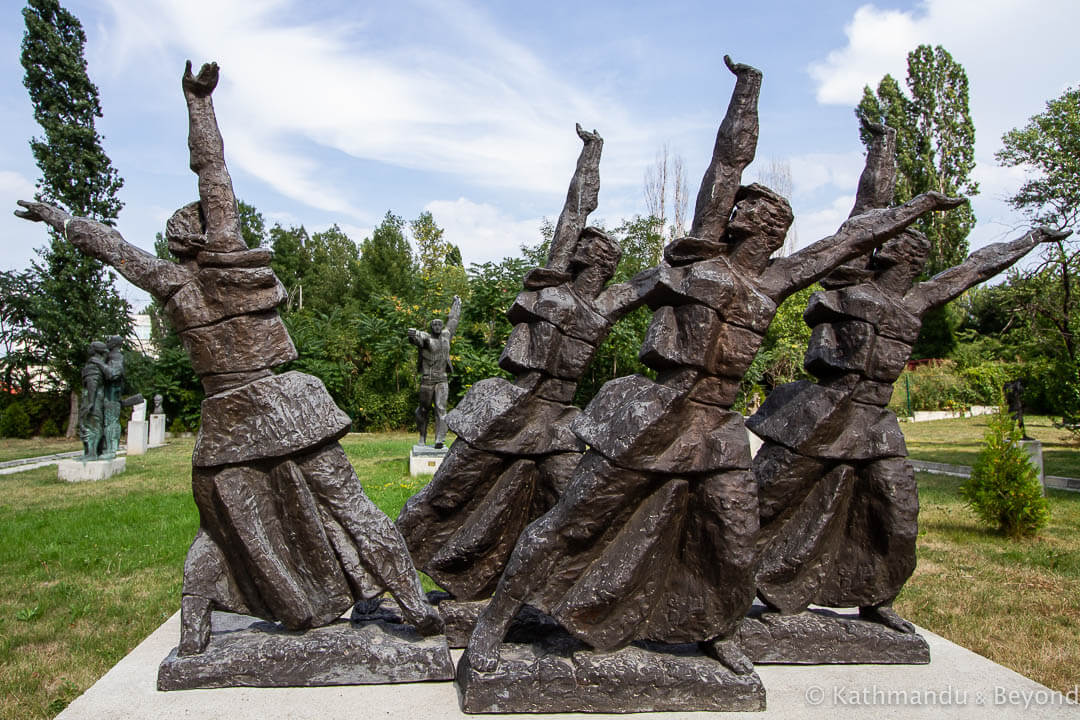
The Museum of Socialist Art – this monument is called “Republic” and was originally created in 1974 by sculptor, Lyubomir Dalchev
To expand further. As is the case in many capitals in the former Eastern Bloc and the Soviet Union, Sofia has its fair share of unapologetic, giant, over-the-top Soviet-style monoliths which I assumed had been erected to venerate the Motherland.
But apparently, this is not necessarily the case in Sofia (and other places in Bulgaria for that matter) and the Tourist Information Centre guy told me this in no uncertain terms. He informed me that several of the monuments that we were looking for were in fact constructed to commemorate and glorify the Bulgarian state. I had no reason to disbelieve him. He seemed to know what he was talking about, plus I did my own research later that day which confirmed what he told us was correct. However, and it’s a reasonable however, in my opinion, all of the monuments that we wanted to see were built between 1946 and 1990 when the country was under the control of the Bulgarian Communist Party. So, what I should have said was that we were trying to locate some ‘monuments that were built during the communist-era’, rather than we were looking for ‘communist-era monuments’.
As it turned out, some of the places we tracked down did, in fact, pay homage to Russia and the Soviets but as a word of warning, if you do visit Sofia’s main Tourist Information Centre (near the Monument to the Soviet Army/22 Tsar Osvoboditel Blvd) then be careful with your wording if you are intending to ask about anything related to the communist period.
Here’s what we found in the Bulgarian capital and at the end of the post, is a Google map with the locations of the Communist-era architecture we saw in Sofia.
The Largo
The Largo consists of three Stalinist Empire style buildings that were constructed in the 1950s: the TZUM-Sofia Central Department Store (left), the President’s Office (right) and Party House (centre). The latter served as the headquarters of the Bulgarian Communist Party until 1990. As a structure, the Largo dominates central Sofia and it is considered to be one of the finest examples of postwar Socialist-era architecture in Southeastern Europe. Of all the Sofia architecture we saw, this has got to be one of the most impressive buildings.
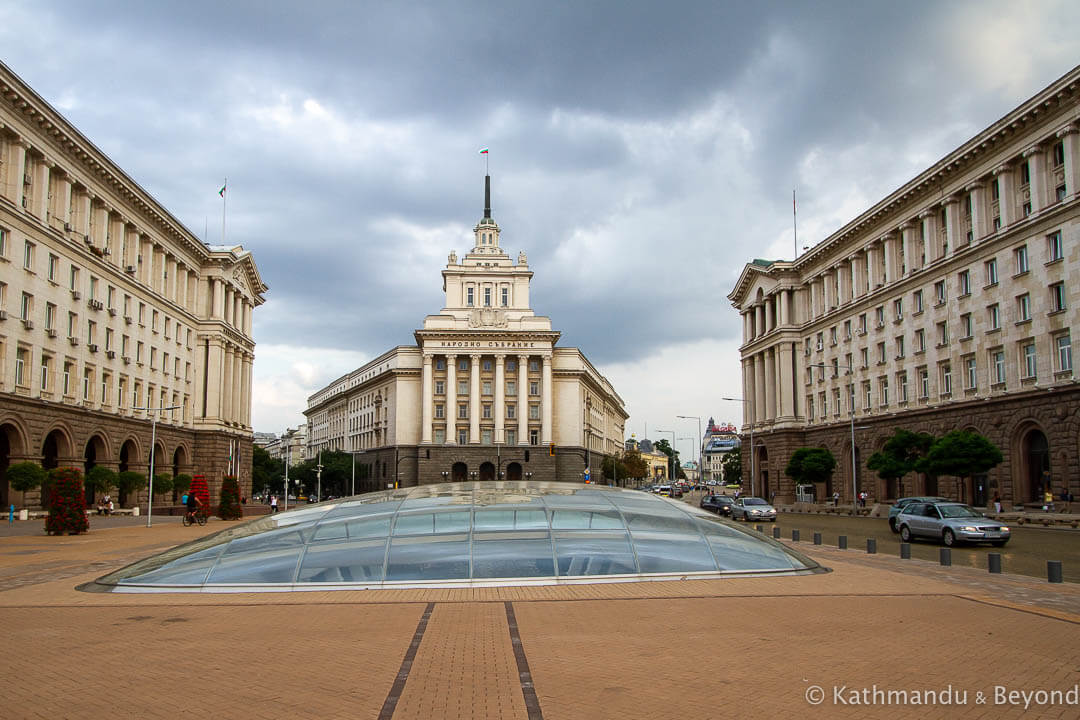
The former Communist Party House (The Largo)
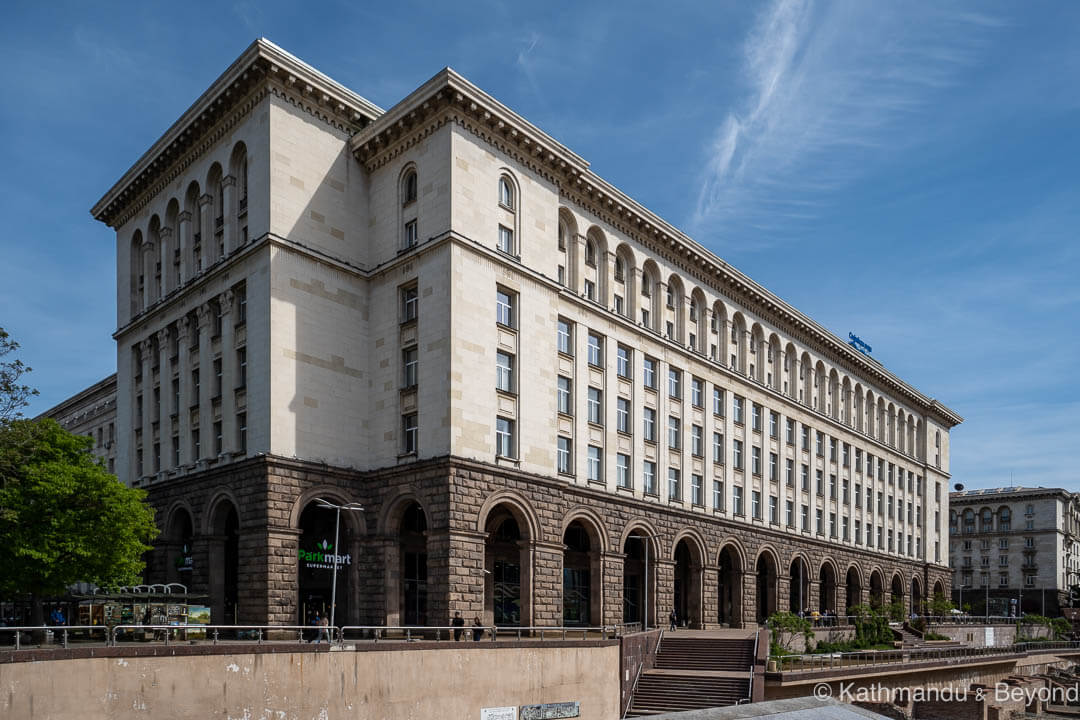
The TZUM-Sofia Central Department Store (The Largo)
Where is the Largo in Sofia
If you are wandering around central Sofia you won’t miss the Largo. It is approximately 1km west of Aleksander Nevsky Cathedral.
Monument to the Soviet Army
Most definitely erected to pay homage to the might of the Motherland, the Monument to the Soviet Army honours Russian soldiers who helped liberate the Bulgarian people from fascism during World War II. Over the years, the ground level relief has been continually vandalised with paint by radical, reformists and no doubt a few yobs who just like using spray paint. Acts of defacement include spraying on the colours of the Ukrainian flag, adding balaclavas to the soldiers in order to depict the Russian activist band, Pussy Riot, and painting the soldiers so that they resemble well-known American icons such as Superman, Captain America and Ronald McDonald!
The authorities keep undoing these acts of vandalism and when we visited in August 2016 the base relief surrounding the obelisk was clear of creative paint jobs but the photo below demonstrates previous perpetrators handiwork.
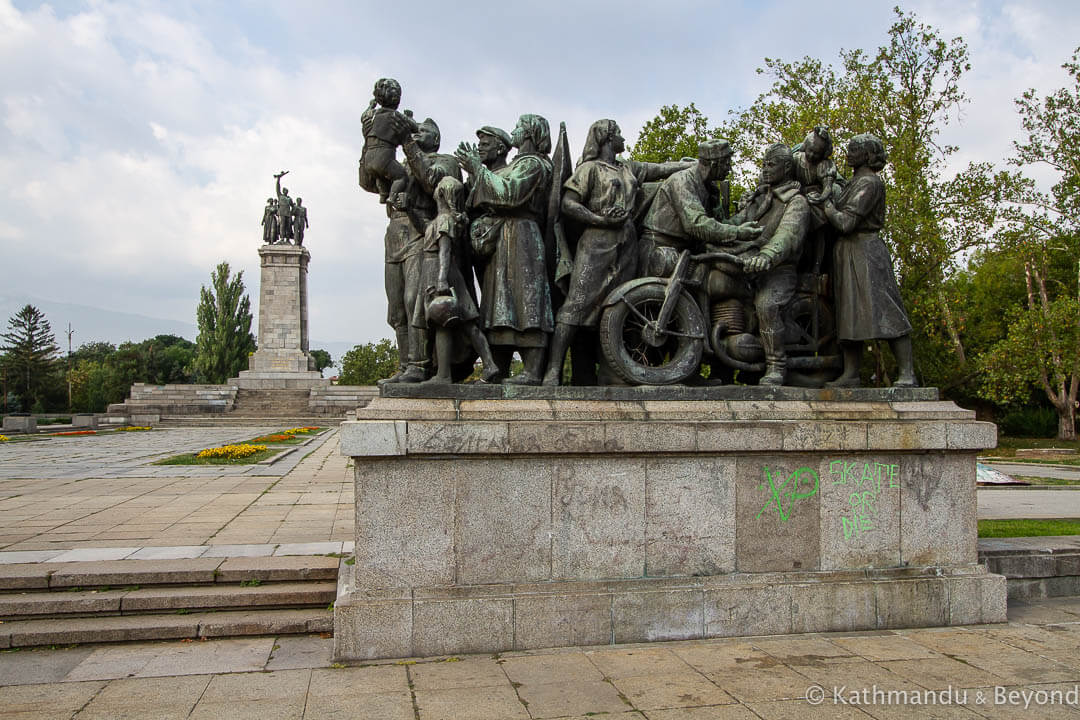
Monument to the Soviet Army
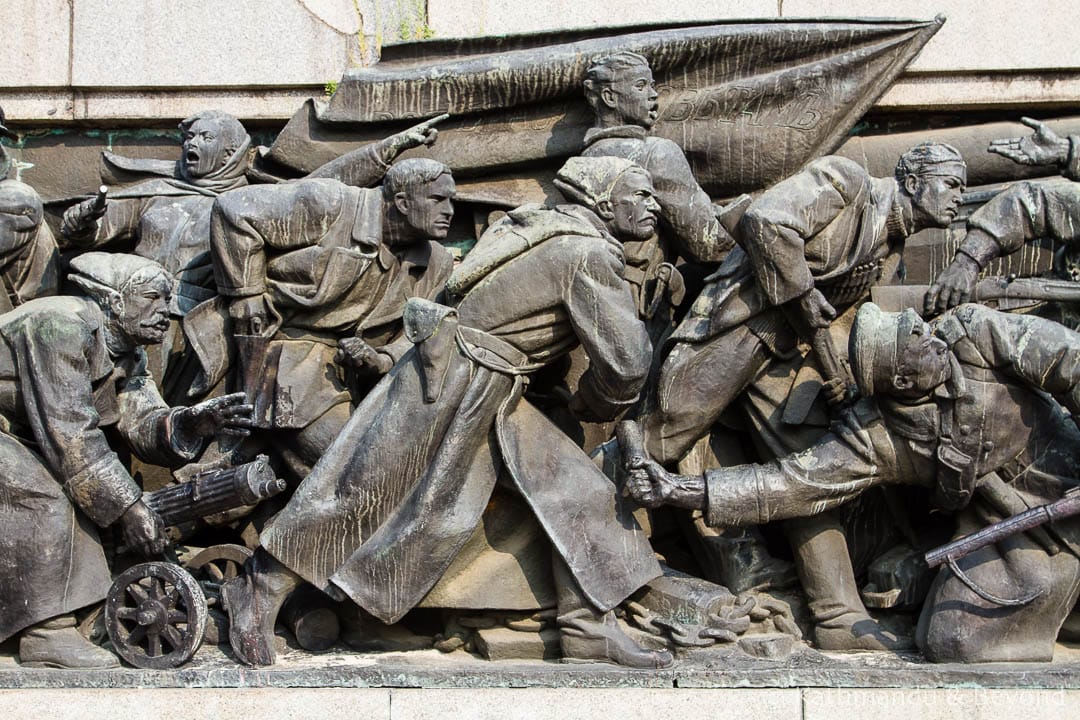
Monument to the Soviet Army
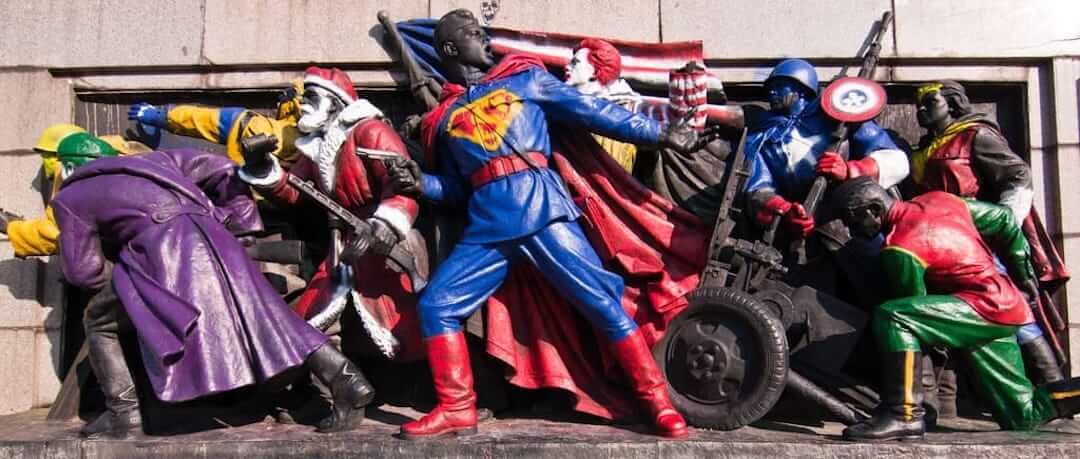
Monument to the Soviet Army. Image © Michal Janček / Flickr
How to locate the Monument to the Soviet Army in Sofia
The monument is located in Knyazheska Garden, close to Sofia University and the Tourist Information Centre mentioned above. The nearest metro stop is Kliment Ohridski.
National Palace of Culture
The National Palace of Culture was opened in 1981 to celebrate the 1300th anniversary of the founding of the Bulgaria state. Hexagon in design, the building’s main function is as a concert hall but it also hosts conferences and exhibitions and is the largest of its kind in the Balkans.
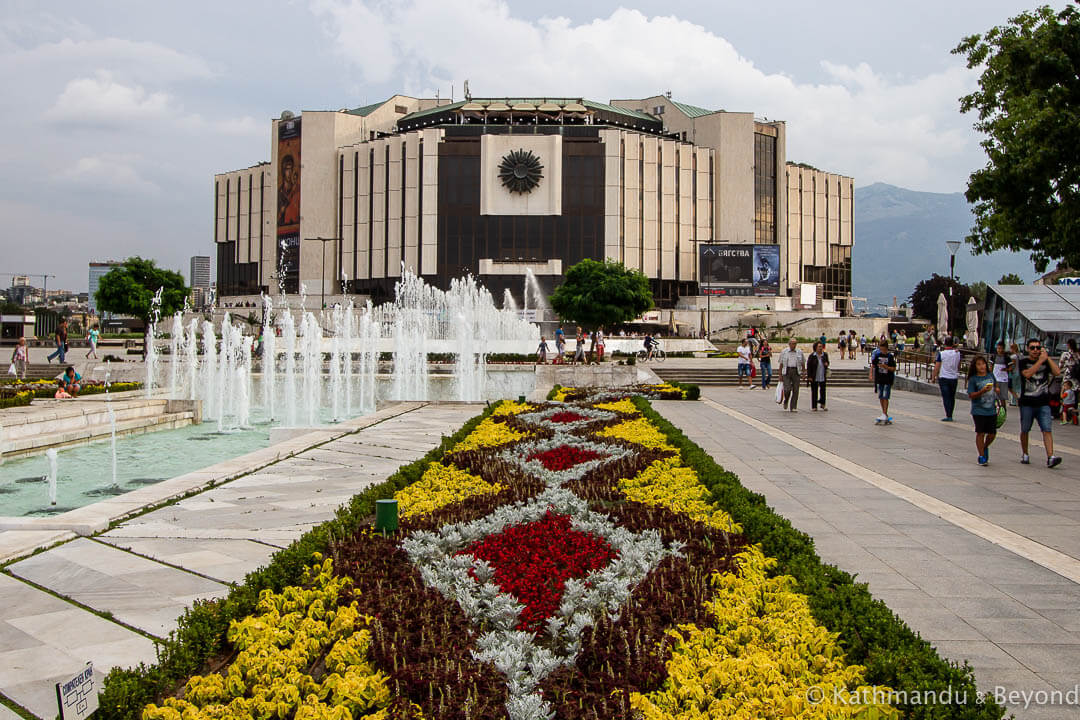
National Palace of Culture
How to locate the National Palace of Culture in Sofia
The National Palace of Culture is situated in Ploshtad Bulgaria, a small park popular with locals. The nearest metro is NDK plus it is also a very short walk from the bottom of Vitosha Boulevard, Sofia’s main pedestrian drag.
Monument to 1300 Years of Bulgaria
As its name suggests, this monument was also built to commemorate Bulgaria’s 1300th anniversary. It was constructed in great haste, which in turn resulted in the monument beginning to fall apart not long after its unveiling in 1981.
It has remained in a state of abandonment ever since, with public opinion torn on what to do with it – knock it down completely or renovate it. Indeed, this was the one that got the guy in the Tourist Information Centre the most riled. He told us we really were wasting our time looking at it and his disdain for the structure was obvious.
Update: The Monument to 1300 Years of Bulgaria was demolished in 2017.
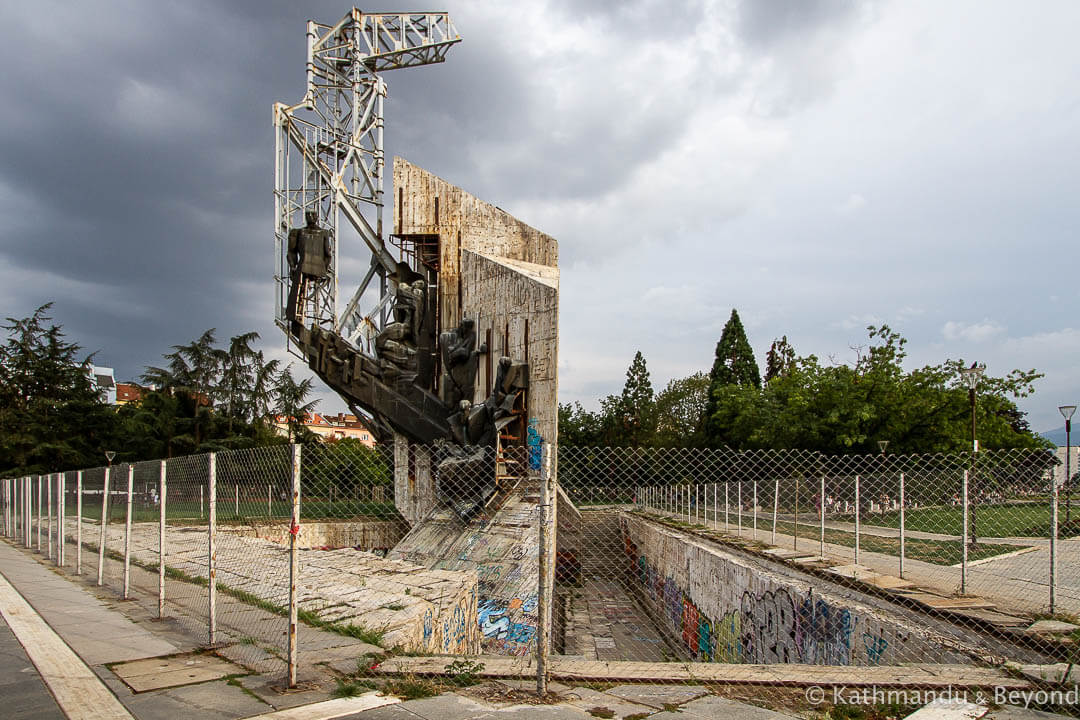
Monument to 1300 Years of Bulgaria
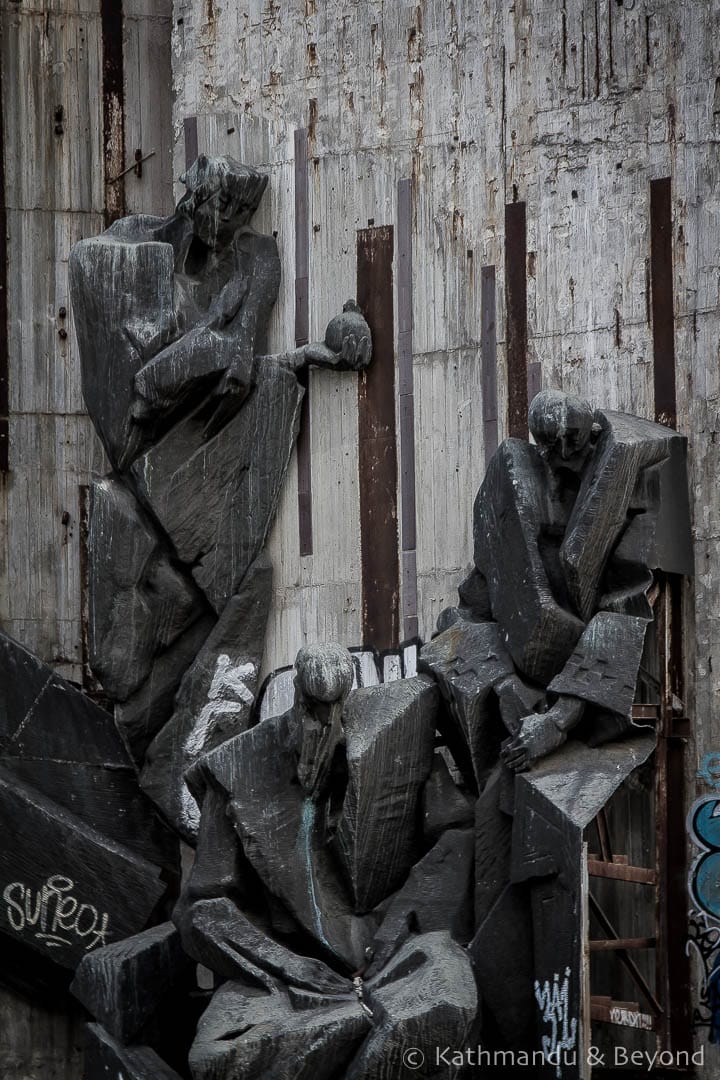
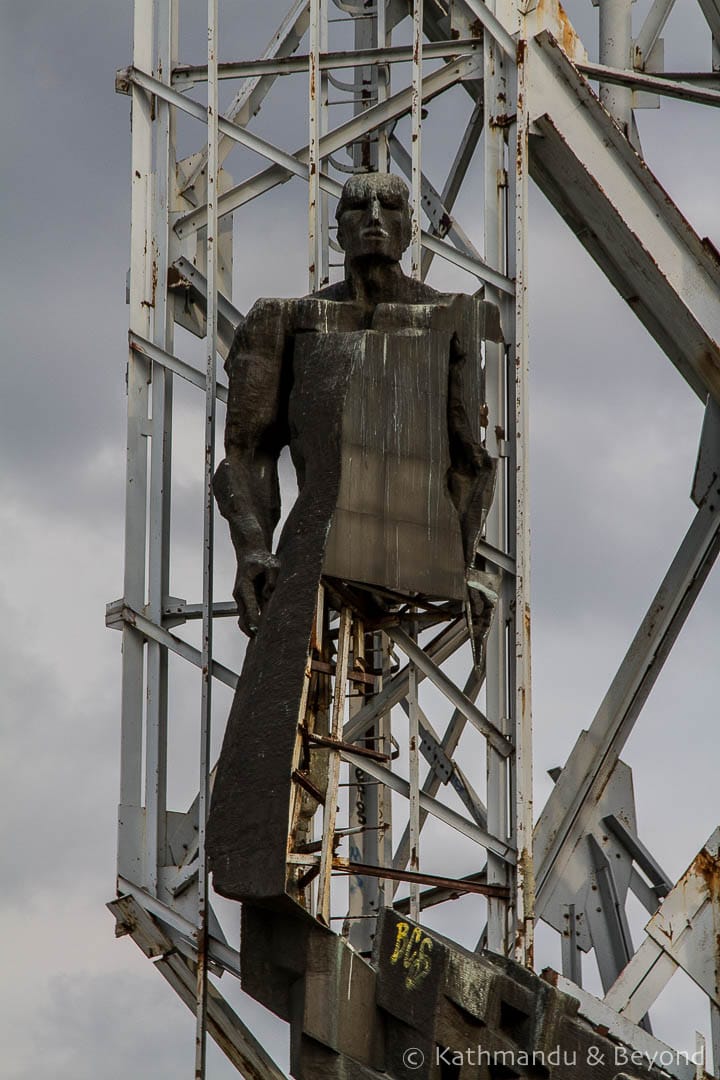
Monument to 1300 Years of Bulgaria
Where is the Monument to 1300 Years of Bulgaria in Sofia
What’s left of this crumbling monument is only a few hundred metres away from the National Palace of Culture. Just walk to the other end of Ploshtad Bulgaria (in the direction of Vitosha Boulevard) and the structure will be on your left.
Update: Once one of the most imposing examples of Communist-era architecture in Sofia, the Monument to 1300 Years of Bulgaria was demolished in 2017.
The Mound of Brotherhood
The Mound of Brotherhood, also known as the Fraternal Mound, is a 42-metre high obelisk that was unveiled in June 1956 to commemorate the partisans who lost their lives during World War II. Plans to remove the monument after the collapse of communism fell by the wayside but the complex is not well maintained and is covered in a fair bit of graffiti, including a sprayed-on red star at the base of the obelisk itself.
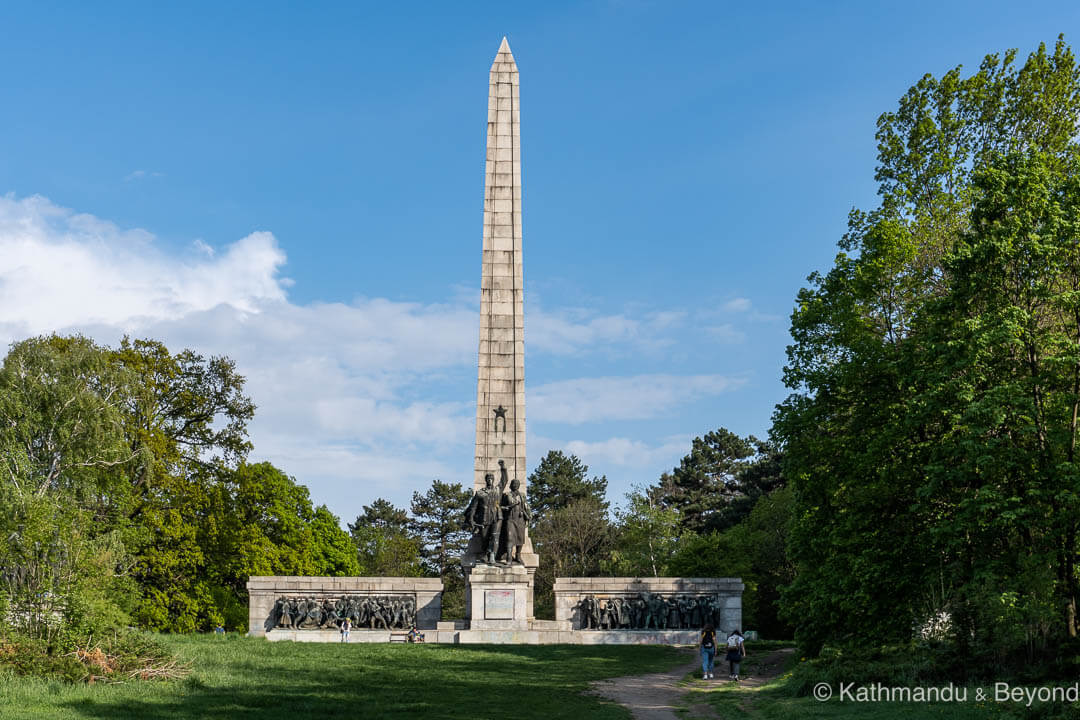
Mound of Brotherhood
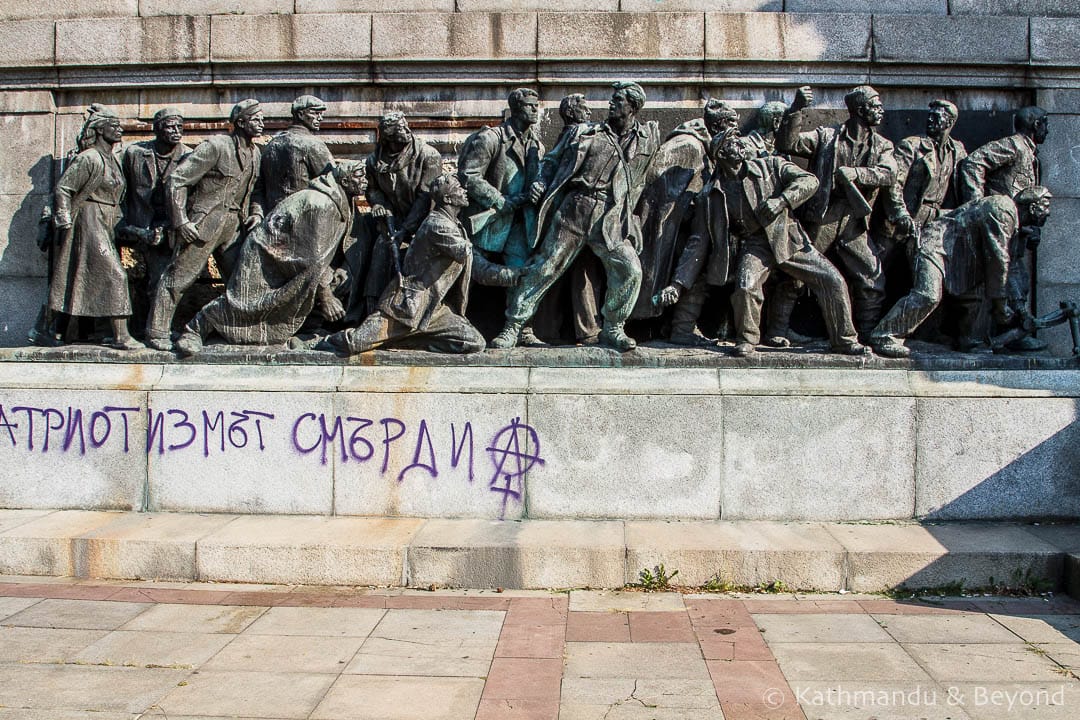
Mound of Brotherhood
Where is the Mound of Brotherhood in Sofia
The Mound of Brotherhood is located in the south-eastern corner of Borisova Gradina, the oldest park in Sofia. The nearest metro is National Stadium but you can also walk there from the Monument to the Soviet Army in about 20 minutes (1.5km).
The Bells Monument (Banner of Peace)
A fine example of Communist-era architecture in Sofia, the Bells Monument was originally built as part of the celebrations for the first-ever International Year of the Child in 1979. Back then the structure was officially called the ‘Banner of Peace’ and about 100 countries gifted bells of all shapes and sizes and these were placed around the base of the monument. The initiative kept going for about a decade and the four assemblies that were held at the complex during this period played host to several thousand children who came from nearly 140 countries. The event ceased in 1990 and the complex fell into a state of ruin and some of the bells were stolen. These days, the site is open again but purely as a place of interest. Security guides ensure no more bells are stolen and the gardens that surround the structure are well manicured.
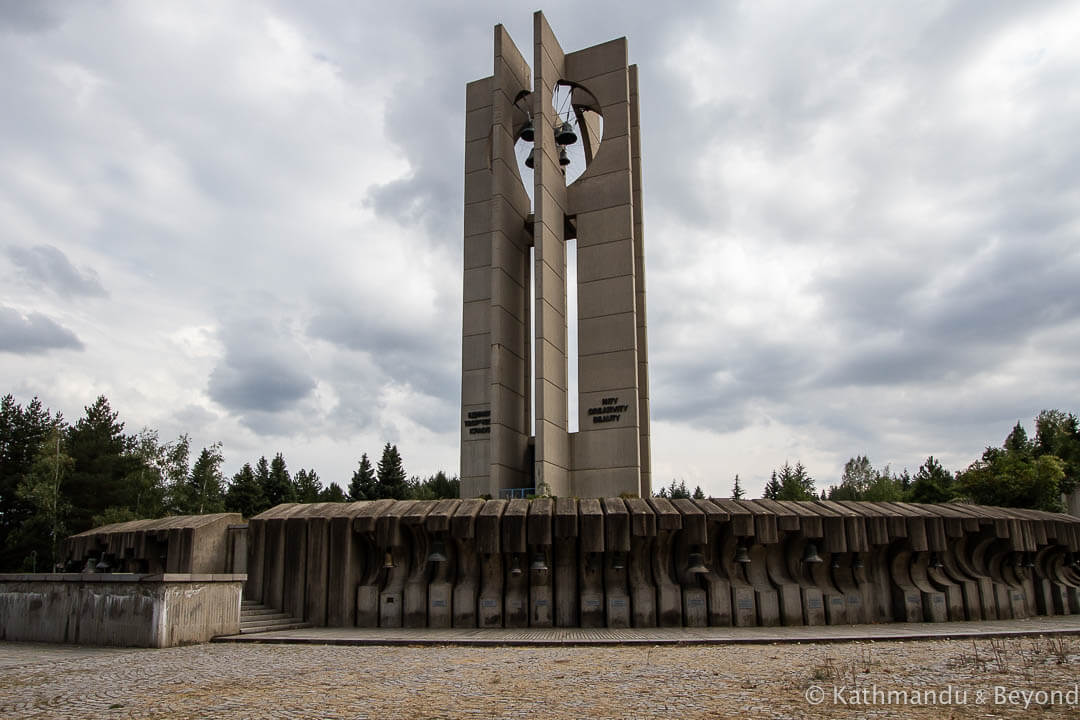
Bells Monument (Banner of Peace)
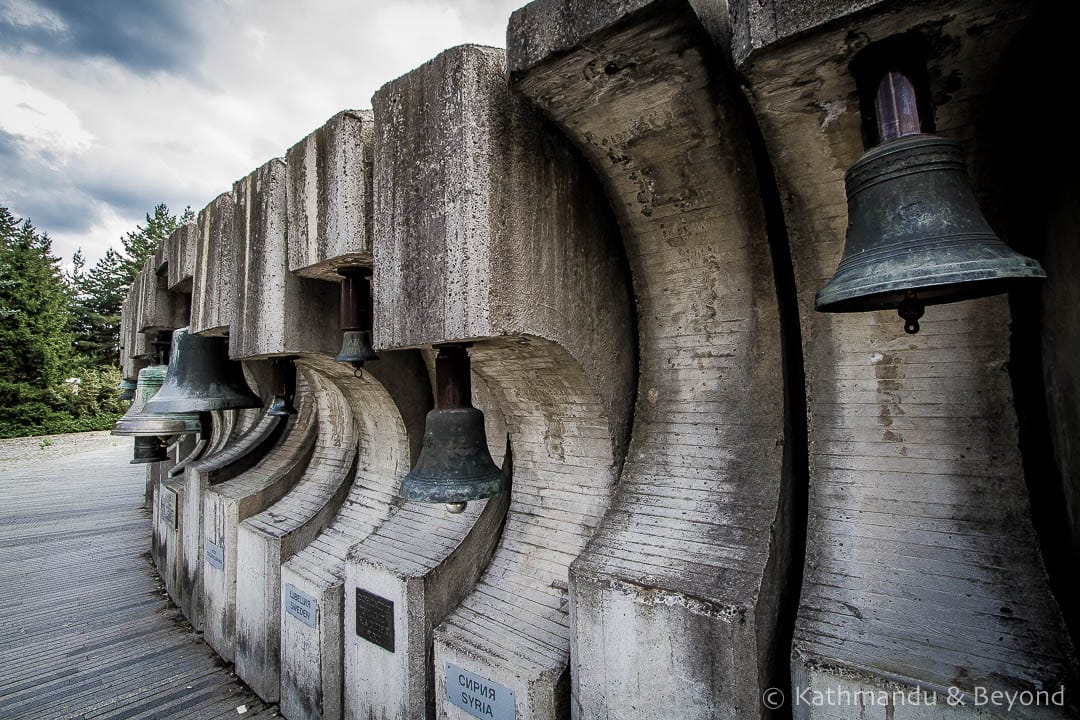
Bells Monument (Banner of Peace)
Where is the Bells Monument (Banner of Peace)
The complex is situated 14km east of the city centre but it is still fairly simple to reach. Take the metro to Business Park, which is the last stop on Red Line 1. Come out of the metro station on the left-hand side and walk in a southerly direction along a slip road that runs parallel to the business park. After about 200 metres, the monument becomes clearly visible in the distance. Just keep walking towards it and the way will become clear. It takes about 25 minutes in total to get there from the metro station, a distance of 1.5km.
Note: The Bells Monument is also known as the Banner of Peace, the Monument of Peace in Bulgaria, Park Kambanite and International Park of Peace. Park Kambanite is best for locating the complex on Google Maps or maps.me. Or check the location on our map below.
Museum of Socialist Art
Similar to Grutas Park in Lithuania and Memento Park in Budapest, Hungary, the Museum of Socialist Art in Sofia is a storage area for all the unwanted Socialist-era statues and artwork that the authorities didn’t have the heart to get rid of. The indoor gallery houses some stirring works of art from the period while outside over seventy stern-looking statues adorn the grounds that surround the gallery. There is also a small gift shop, where a 30-minute propaganda movie (with English subtitles) is shown on a regular basis.
The museum is open from 10am to 6pm on Tuesday, Wednesday, Friday and Sunday and from 12 noon to 8pm on Thursday and Sunday. It’s closed on Mondays and the current entrance fee is 6Lev per person (US$3.30/GBP2.75)
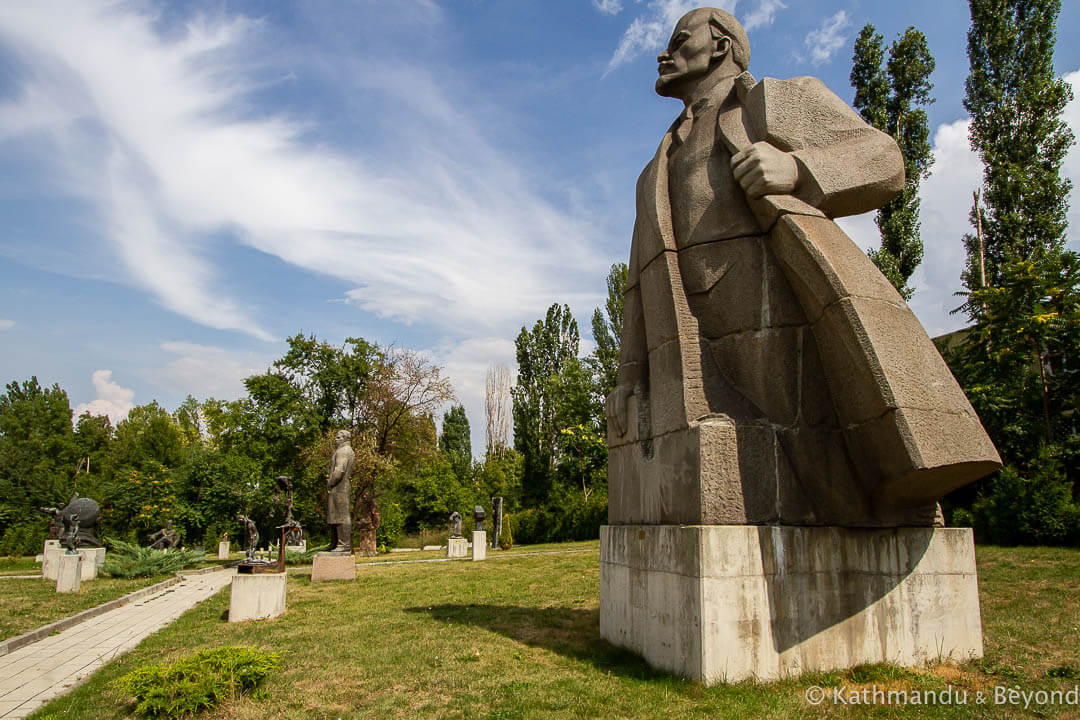
Museum of Socialist Art – this monument to Lenin dates back to 1971 and was the work of sculptor, Lev Karbel
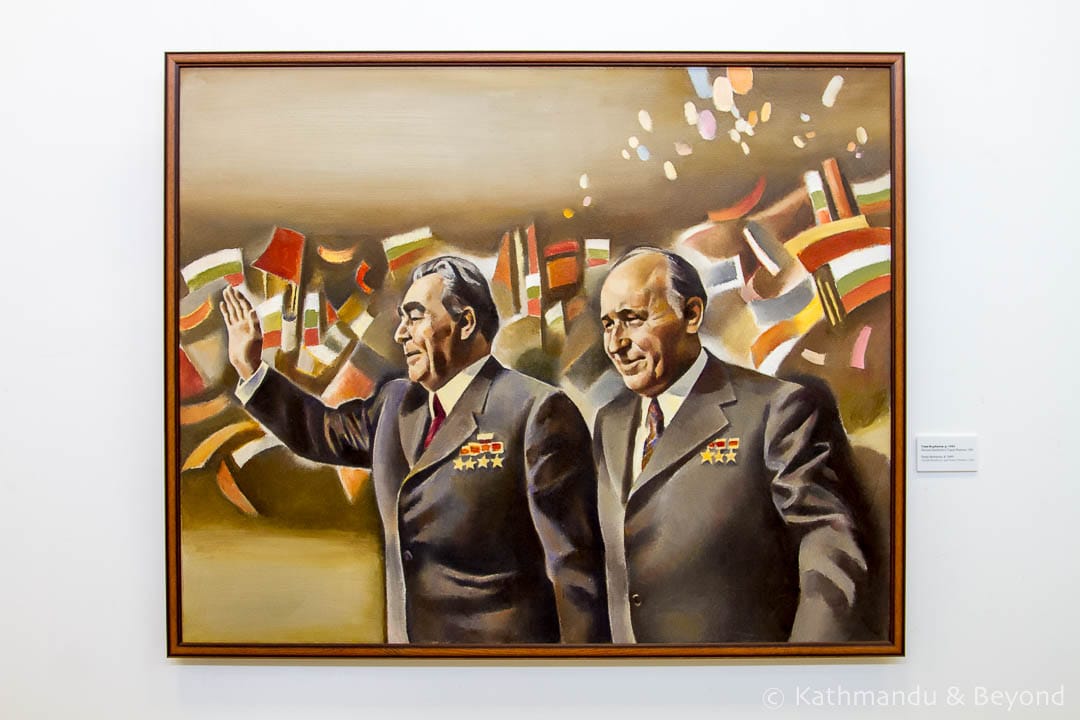
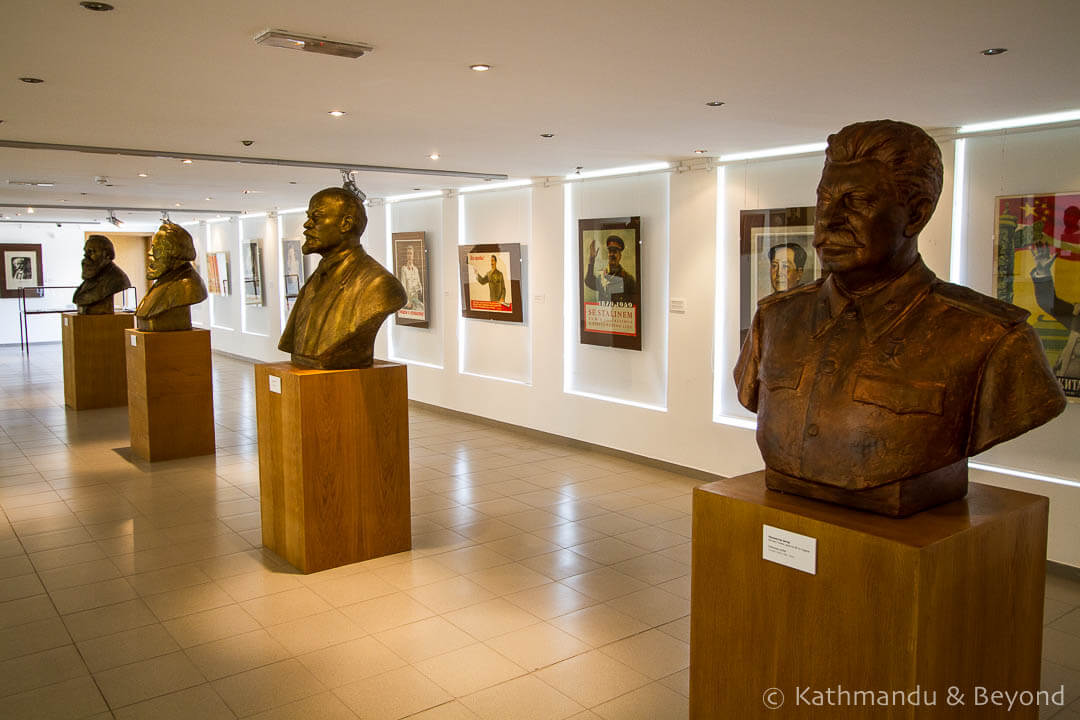
Interior of the Museum of Socialist Art
Where is the Museum of Socialist Art in Sofia?
The easiest way to get to the museum is to take the metro to G. M. Dimitrov station. On arrival at the station, walk back in the direction of the city centre for about 500 metres until you see Litex Motors. Turn right at this point and the museum is situated 200 metres further along on the right-hand side.
Map highlighting the Communist-era architecture in Sofia
READ MORE BLOG POSTS ABOUT BULGARIA
SEE MORE MONUMENTS, STATUES AND COMMUNIST-ERA ARCHITECTURE IN BULGARIA
If you enjoyed this post about Communist-era architecture in Sofia, or are planning a trip to Bulgaria, please share it…
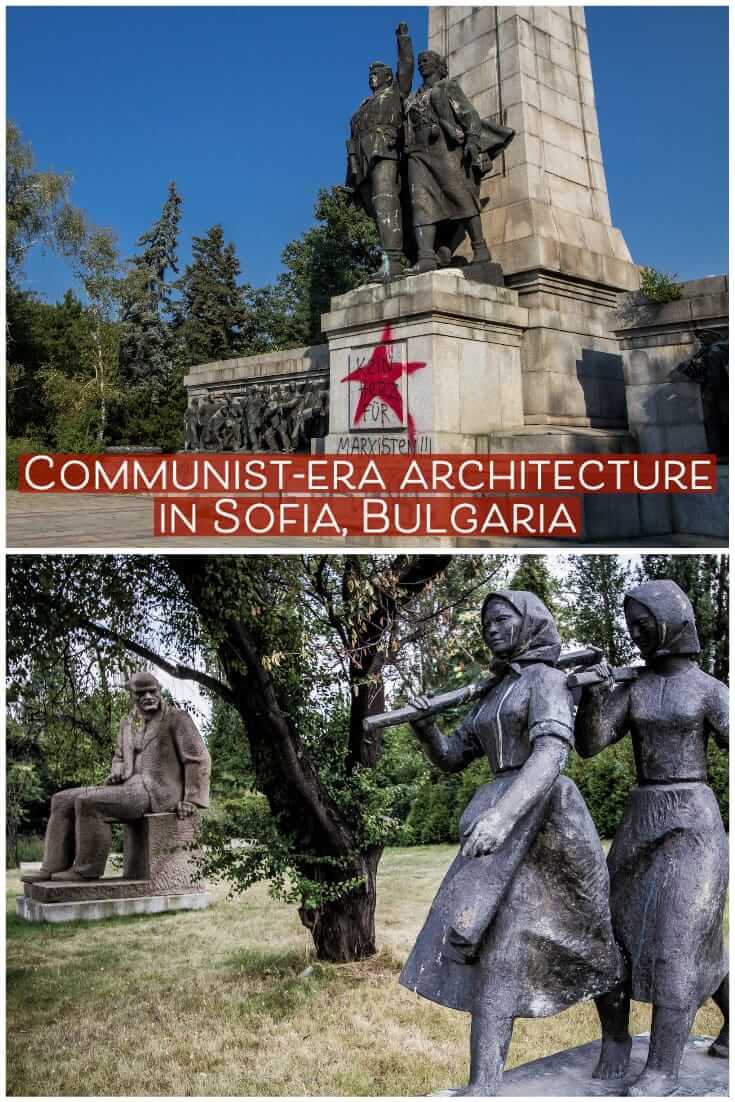
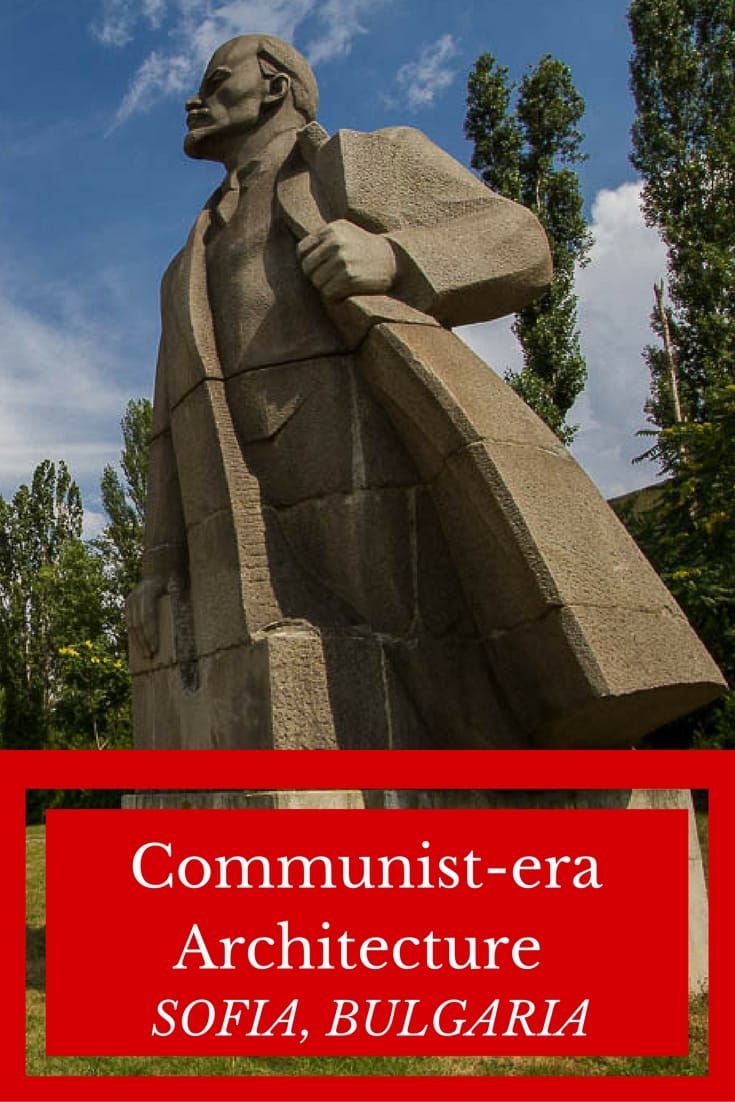
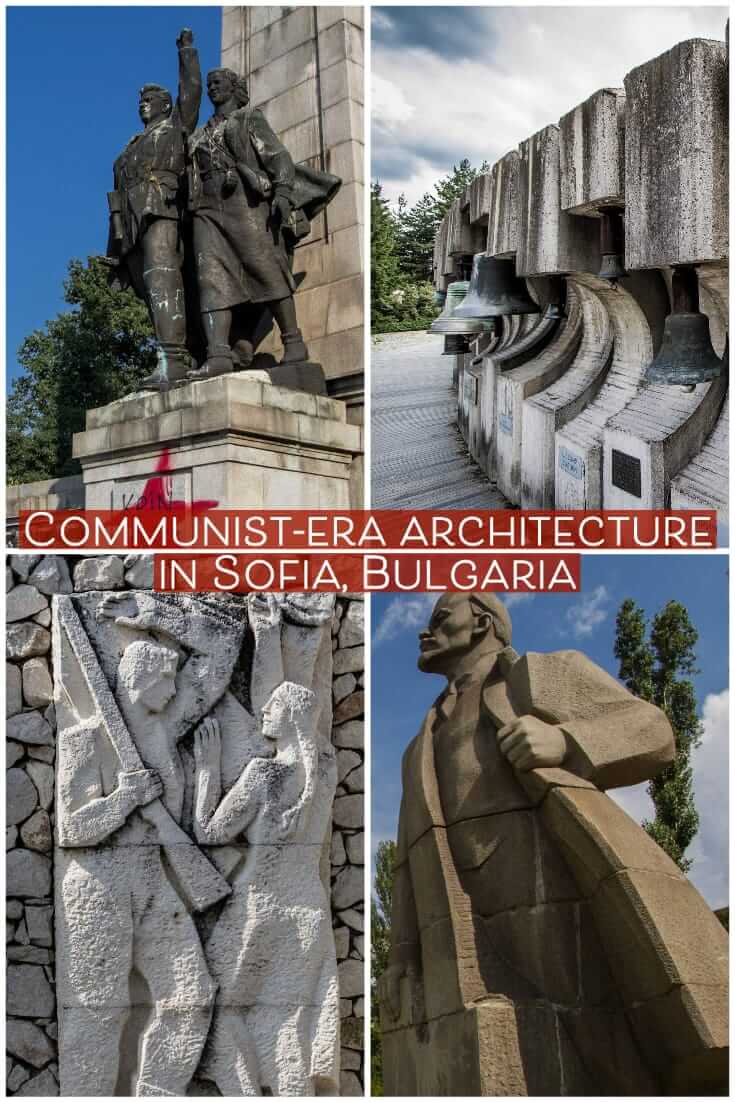

A great recap of a great city. These monuments are a very interesting part of the city.
On a side note, I also had an issue with a representative from the same tourist office. I said hello in Bulgarian when I entered the office, and between my awful pronunciation and accent if came off as Russian. The representative took great offense, and dressed me down for my bad pronunciation .
Thanks and I agree Sofia is a great city. This post concentrates on the Communist-era buildings and monuments but we of coarse saw all of the more traditional sights and they were superb also, especially Alexander Nevsky Cathedral – what a building!
I had to laugh about your second comment. It makes me feel better, knowing I wasn’t the only one to get a dressing down for saying the wrong thing. Future visitors beware right??
Honestly, what an asshole the guy is. His job is to help tourists, not give them a dressing down on details (it sounds like this is how he gets his kicks). Just like in Romania – useless. And then they wonder why we leave the country with a bad taste in our mouths.
He was actually OK in the end. I guess you could argue that at least he had a passion for his job and city. We’ve been in so many tourist boards where they just don’t care and can’t be bothered to help, to the extent, even, that these days we rarely go inside one anymore! Bolshy and passionate is better than lazy and job’s worth!
I was in Sofia this week for a night, it was -5C, so I didnt leave my hotel. Thanks for showing me what the city really looks like.
-5C, thats too cold, no wonder you didn’t leave the hotel! If you get the chance to visit again (in warmer climes), Sofia is well worth exploring.